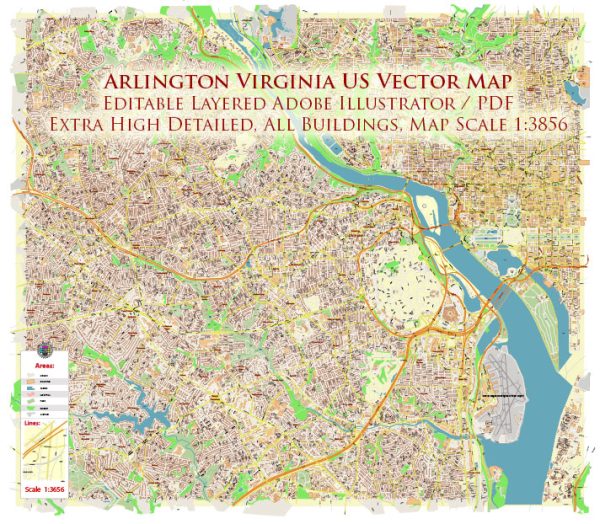Arlington, Virginia, located just across the Potomac River from Washington, D.C., has a rich history of urban development that reflects the broader trends and challenges of urbanization in the United States. Its transformation from a rural area to a bustling suburban community and a vital part of the Washington, D.C. metropolitan area is a testament to the evolving patterns of urban development.
- Early Settlement and Rural Life: Arlington’s history dates back to the early 17th century when European settlers established farms and plantations in the region. The land was initially home to Native American communities, but it was later settled by English and Scottish immigrants. Tobacco farming was a major industry in the area during the colonial period, and the land was used for agriculture for many years.
- Connection to George Washington: One of the most famous figures in Arlington’s history is George Washington. The Custis family plantation, known as the Arlington House, was built by George Washington Parke Custis, the adopted grandson of George Washington. The Arlington House is now part of Arlington National Cemetery and has historical significance as the former home of General Robert E. Lee during the American Civil War.
- The Civil War: Arlington played a significant role in the American Civil War. The Arlington House was occupied by Union forces, and the land was used for the establishment of Arlington National Cemetery, which remains one of the most iconic military cemeteries in the United States. The war also brought changes to the landscape and infrastructure of the region.
- Post-Civil War Urbanization: After the Civil War, Arlington gradually transitioned from a rural area into a more suburban and urban environment. The development of transportation infrastructure, such as bridges connecting Arlington to Washington, D.C., and the growth of streetcar lines, facilitated this transformation. Suburbanization gained momentum in the early 20th century, and residential neighborhoods began to take shape.
- Federal Presence and Pentagon Construction: Arlington’s proximity to Washington, D.C. made it an attractive location for government agencies and military facilities. The construction of the Pentagon in 1943 during World War II solidified Arlington’s role as a hub for federal offices and defense installations. The Pentagon is now one of the world’s largest office buildings and a symbol of Arlington’s association with the U.S. Department of Defense.
- Metro System and Contemporary Development: The arrival of the Washington Metro in the 1970s further influenced Arlington’s development. The Metro made the area more accessible and spurred the growth of high-density, transit-oriented developments in Arlington, particularly in the Rosslyn-Ballston corridor. Arlington embraced the principles of smart growth and urban planning to create a diverse and vibrant urban landscape.
- Diverse and Thriving Community: Today, Arlington is known for its cultural diversity, strong economy, and high quality of life. It offers a mix of urban and suburban living, with a blend of residential, commercial, and government facilities. It continues to be a vital part of the Washington, D.C. metropolitan area, with a focus on sustainability, green spaces, and responsible urban development.
Arlington’s history of urban development reflects the broader trends in American cities, from its rural origins to its current status as a well-planned and prosperous urban community closely integrated with the nation’s capital. The growth and transformation of Arlington provide insight into the challenges and opportunities that have shaped the development of urban areas across the United States.


 Author: Kirill Shrayber, Ph.D.
Author: Kirill Shrayber, Ph.D.